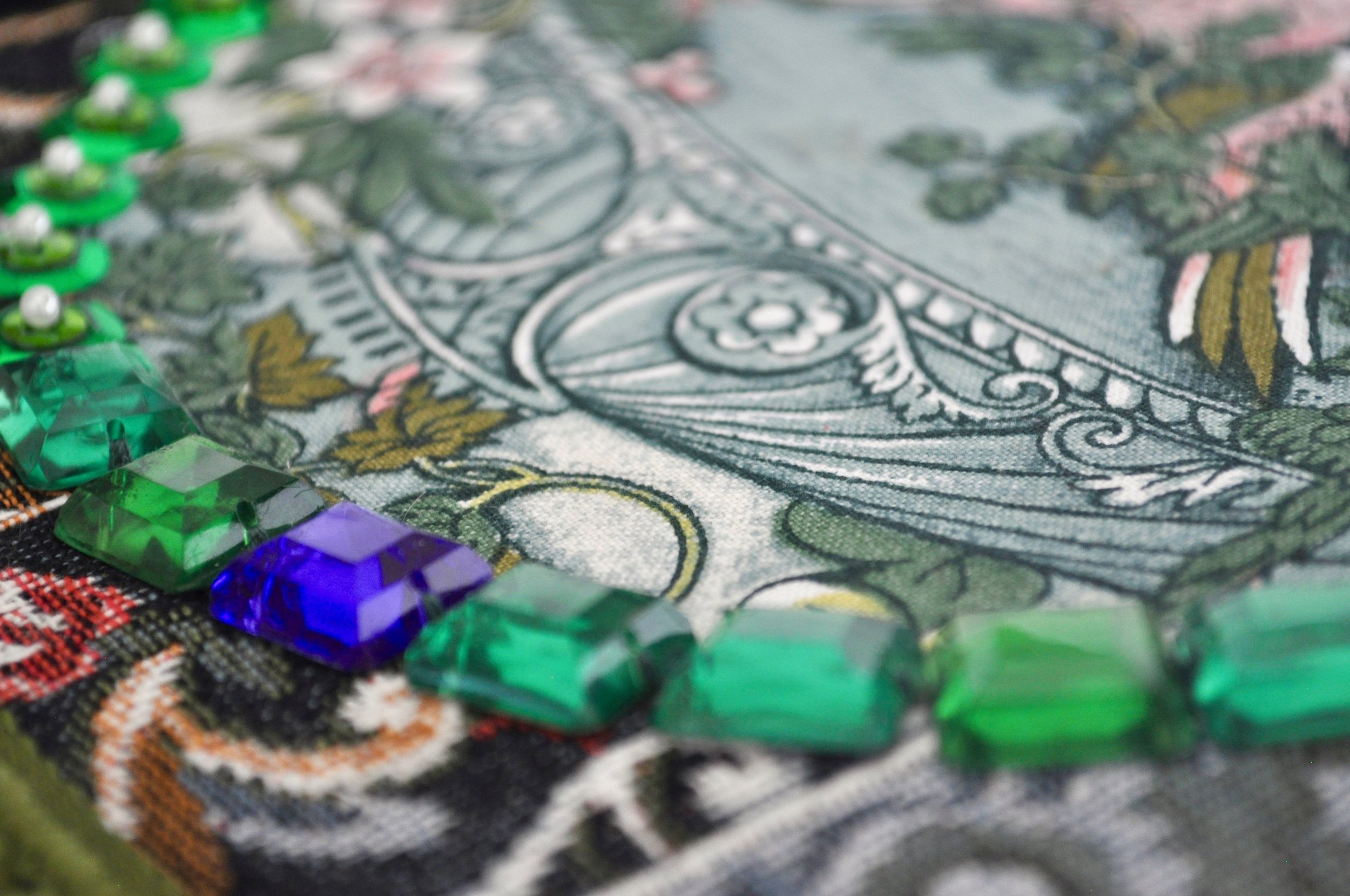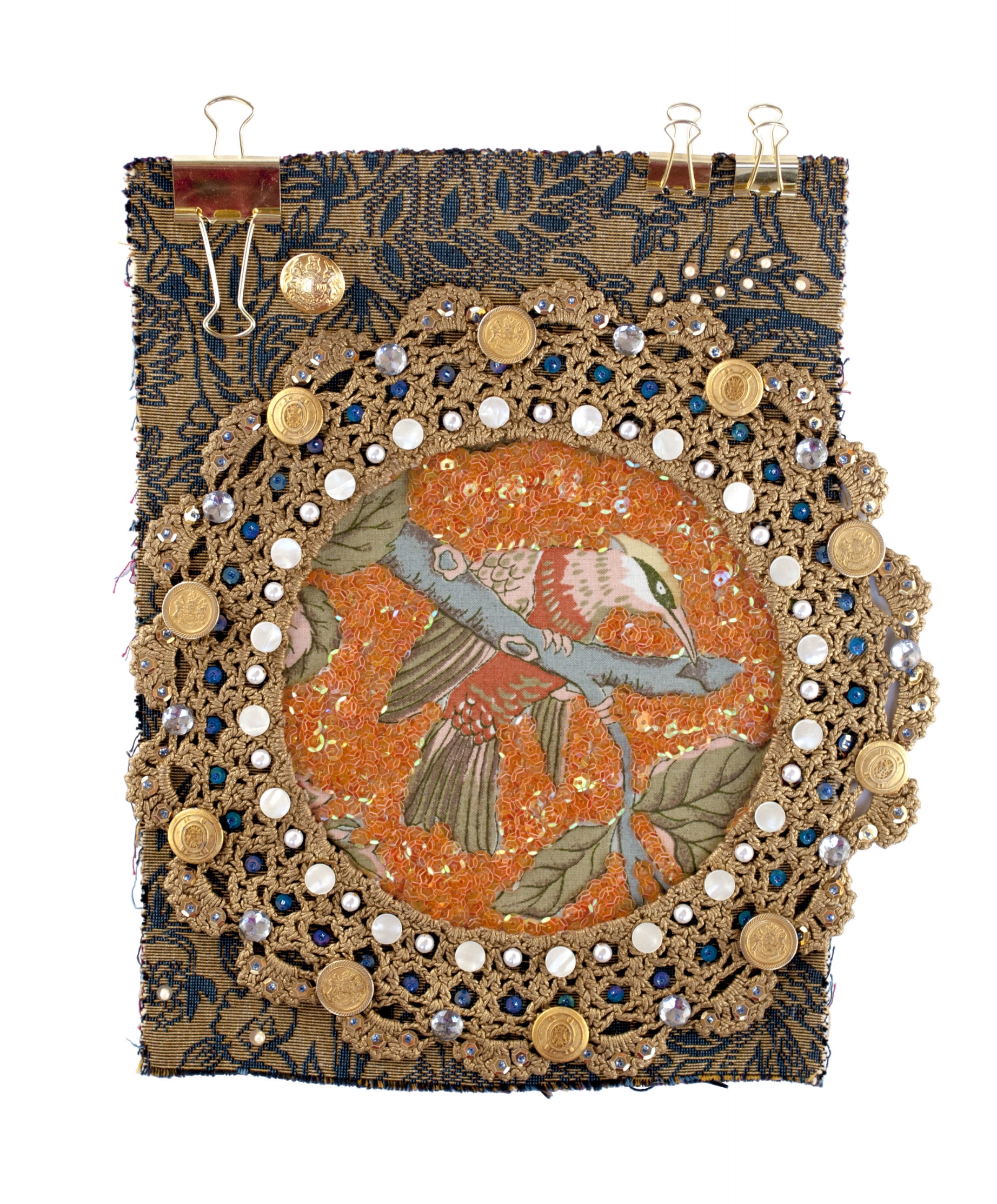






Textile Art
Textile Art
John Laurence was born in Belfast, Northern Ireland in 1983. In his work as a textile artist, he playfully borrows elements from wallpaper and fabric design to create indulgent and grandiose collages. Seeking to manipulate and deconstruct pattern in innovative and colourful ways, he brings together preexisting fabric designs and embellishes pieces indulgently with beads, buttons, sequins, diamantes, and other materials.
He deploys fabric like paint, embellishes beyond the constraints of gilded frames, and screen-prints and hand-stitches pattern over pattern. This recontextualizing of upholstery fabrics with various patterned fabrics and design motifs produces a vast number of unique design possibilities, which John explores with a Fauvist colour palette and a penchant for extravagance.

Empyrean
Empyrean
“Because the medieval universe is finite, it has a shape, the perfect spherical shape, containing within itself an ordered variety.”
A work-in-progress, Empyrean takes its name from superseded theories of medieval cosmology, which understood the stars as fixed entities embedded in rotating celestial spheres, like jewels set in an orb. These colourful and highly embellished pieces fuse together lace doilies, embroidery circles, and contemporary fabric swatches to imagine glittering, spherical celestial bodies.

Doilies
F O R T H E D A U P H I N
Doilies
F O R T H E D A U P H I N
The series Doilies for the Dauphin continues the aesthetic exploration of embellishment started in Posies for a Prince, this time with lace doilies taking a more material role.
A nod to the legacies of European lacemaking, these works take from a bold colour palette and are adorned lavishly with diamantes, pearls, and intricate beadwork.

Posies
F O R A P R I N C E
Posies
F O R A P R I N C E
The series Posies for a Prince is a tactile and aesthetic exploration of fabric swatches and embellishment. Upholstery fabric swatches are juxtaposed with pre-existing and original patterns and design motifs ranging from the floral to the animalic.
Various combinations and sequences of beads, buttons, and sequins frame a familiar porthole– a window into the image. White pearls and gold buttons lend an air of opulence, whilst zippers and office clips bring a taste of the mundane. Patterns meet with one another in a dazzling, prismatic dialogue.

Pastiche
Pastiche
A common treatment across the work is that of pastiche– as both stylistic imitation and composition drawing from disparate sources. The Gentleman's Parlour, for instance, borrows from certain conventions of Victorian interior design: richly patterned floral fabrics, printed flock and damask wallpapers, and an exuberant love for opulence. The colours, however, drawing from the Fauves' overpowering palette, are vibrant, high-keyed, and 'direct from the tube.'
A kaleidoscopic arrangement of cadmium yellow, international orange, and shocking pink pulsates like neon lights against a rich Egyptian blue. Patterns are apposed to varied and unexpected effect. Whilst the space reaches for luxury, it is saccharine in its playful, high camp spectacle. Like the parlour, many of these pieces were intended to explore and inhabit this tension between the sumptuous and stately with the gaudy and incongruous– between what is tasteful and what is distasteful.

Prints
Prints
As a means to challenge notions of taste, printing has served as a starting point in an alternative approach to the creation of pattern.
Drawing from formal qualities in wallpaper design, pattern repeats have been layered on patterned fabrics, flock wallpapers, and more unusual substrates such as faux fur.
These prints were produced with a more painterly aim of achieving a sense of non-reproducibility and have been used subsequently in later works.
































































